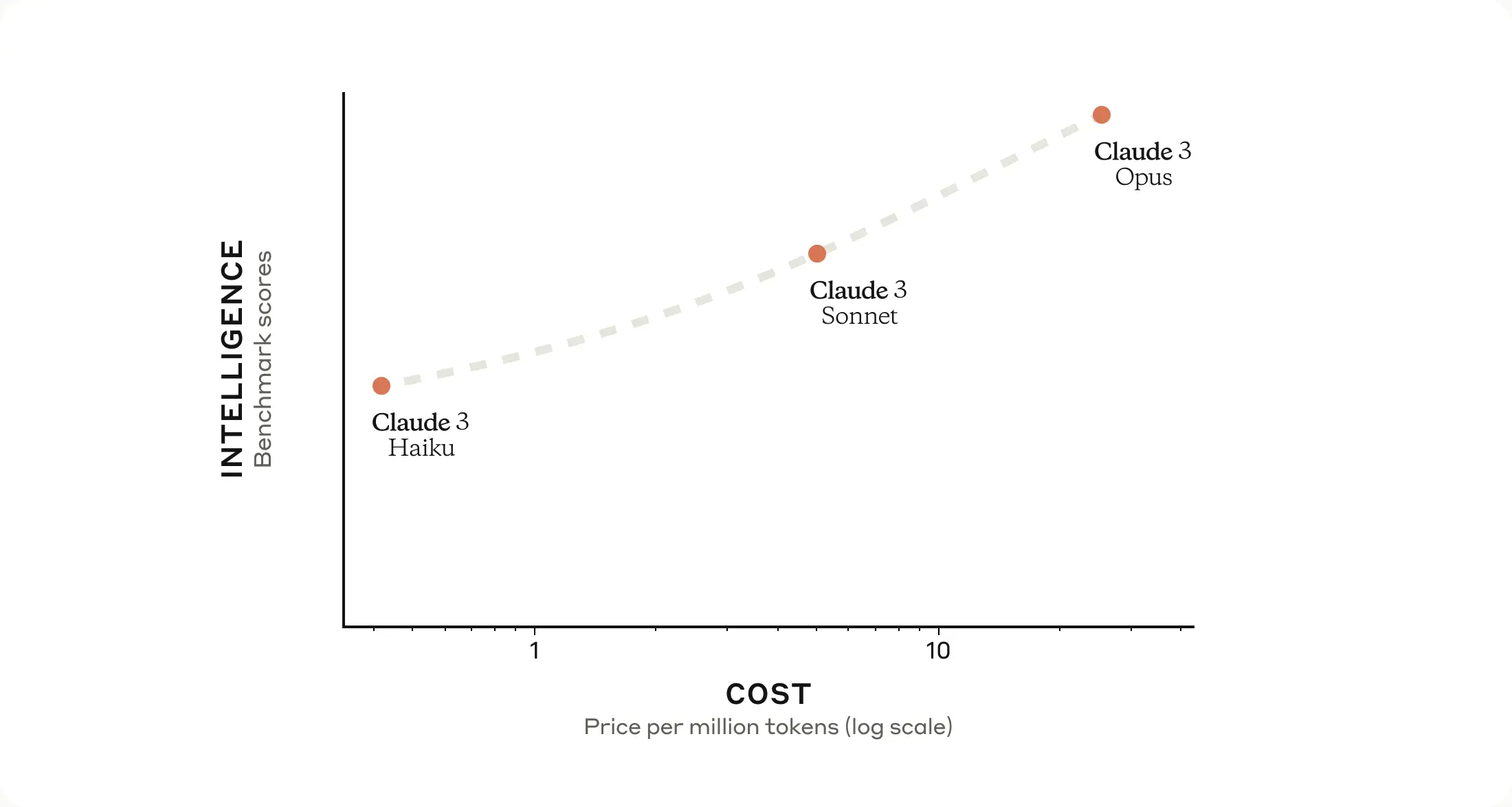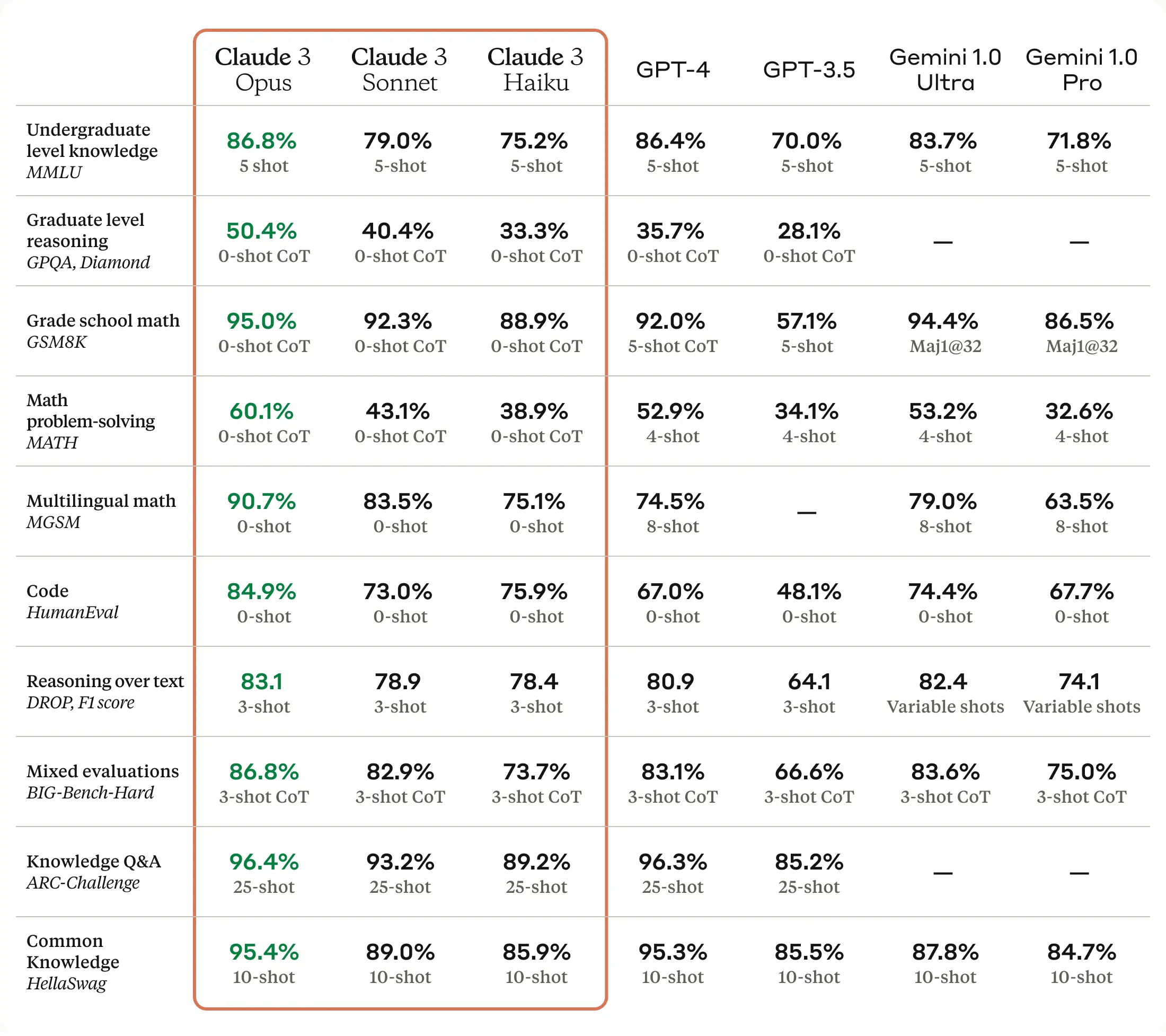AI chatbots are transforming the digital world with increased efficiency, personalized interaction, and useful data insights. While Open AI’s GPT and Google’s Gemini are already transforming modern business interactions, Anthropic AI recently launched its newest addition, Claude 3.
This blog explores the latest developments in the world of AI with the launch of Claude 3 and discusses the relative position of Anthropic’s new AI tool to its competitors in the market.
Let’s begin by exploring the budding realm of Claude 3.
What is Claude 3?
It is the most recent advancement in large language models (LLMs) by Anthropic AI to its claude family of AI models. It is the latest version of the company’s AI chatbot with an enhanced ability to analyze and forecast data. The chatbot can understand complex questions and generate different creative text formats.
Read more about how LLMs make chatbots smarter
Among its many leading capabilities is its feature to understand and respond in multiple languages. Anthropic has emphasized responsible AI development with Claude 3, implementing measures to reduce related issues like bias propagation.
Introducing the members of the Claude 3 family
Since the nature of access and usability differs for people, the Claude 3 family comes with various options for the users to choose from. Each choice has its own functionality, varying in data-handling capabilities and performance.
The Claude 3 family consists of a series of three models called Haiku, Sonnet, and Opus.

Let’s take a deeper look into each member and their specialties.
Haiku
It is the fastest and most cost-effective model of the family and is ideal for basic chat interactions. It is designed to provide swift responses and immediate actions to requests, making it a suitable choice for customer interactions, content moderation tasks, and inventory management.
However, while it can handle simple interactions speedily, it is limited in its capacity to handle data complexity. It falls short in generating creative texts or providing complex reasonings.
Sonnet
Sonnet provides the right balance between the speed of Haiku and the intelligence of Opus. It is a middle-ground model among this family of three with an improved capability to handle complex tasks. It is designed to particularly manage enterprise-level tasks.
Hence, it is ideal for data processing, like retrieval augmented generation (RAG) or searching vast amounts of organizational information. It is also useful for sales-related functions like product recommendations, forecasting, and targeted marketing.
Moreover, the Sonnet is a favorable tool for several time-saving tasks. Some common uses in this category include code generation and quality control.
Opus
Opus is the most intelligent member of the Claude 3 family. It is capable of handling complex tasks, open-ended prompts, and sight-unseen scenarios. Its advanced capabilities enable it to engage with complex data analytics and content generation tasks.
Hence, Opus is useful for R&D processes like hypothesis generation. It also supports strategic functions like advanced analysis of charts and graphs, financial documents, and market trends forecasting. The versatility of Opus makes it the most intelligent option among the family, but it comes at a higher cost.
Ultimately, the best choice depends on the specific required chatbot use. While Haiku is the best for a quick response in basic interactions, Sonnet is the way to go for slightly stronger data processing and content generation. However, for highly advanced performance and complex tasks, Opus remains the best choice among the three.
Among the competitors
While Anthropic’s Claude 3 is a step ahead in the realm of large language models (LLMs), it is not the first AI chatbot to flaunt its many functions. The stage for AI had already been set with ChatGPT and Gemini. Anthropic has, however, created its space among its competitors.
Let’s take a look at Claude 3’s position in the competition.

Performance Benchmarks
The chatbot performance benchmarks highlight the superiority of Claude 3 in multiple aspects. The Opus of the Claude 3 family has surpassed both GPT-4 and Gemini Ultra in industry benchmark tests. Anthropic’s AI chatbot outperformed its competitors in undergraduate-level knowledge, graduate-level reasoning, and basic mathematics.
Moreover, the Opus raises the benchmarks for coding, knowledge, and presenting a near-human experience. In all the mentioned aspects, Anthropic has taken the lead over its competition.

For a deep dive into large language models, context windows, and content augmentation, watch this podcast now!
Data processing capacity
In terms of data processing, Claude 3 can consider much larger text at once when formulating a response, unlike the 64,000-word limit on GPT-4. Moreover, Opus from the Anthropic family can summarize up to 150,000 words while ChatGPT’s limit is around 3000 words for the same task.
It also possesses multimodal and multi-language data-handling capacity. When coupled with enhanced fluency and human-like comprehension, Anthropic’s Claude 3 offers better data processing capabilities than its competitors.
Ethical considerations
The focus on ethics, data privacy, and safety makes Claude 3 stand out as a highly harmless model that goes the extra mile to eliminate bias and misinformation in its performance. It has an improved understanding of prompts and safety guardrails while exhibiting reduced bias in its responses.
Which AI chatbot to use?
Your choice relies on the purpose for which you need an AI chatbot. While each tool presents promising results, they outshine each other in different aspects. If you are looking for a factual understanding of language, Gemini is your go-to choice. ChatGPT, on the other hand, excels in creative text generation and diverse content creation.
However, striding in line with modern content generation requirements and privacy, Claude 3 has come forward as a strong choice. Alongside strong reasoning and creative capabilities, it offers multilingual data processing. Moreover, its emphasis on responsible AI development makes it the safest choice for your data.
To sum it up
Claude 3 emerges as a powerful LLM, boasting responsible AI, impressive data processing, and strong performance. While each chatbot excels in specific areas, Claude 3 shines with its safety features and multilingual capabilities. While access is limited now, Claude 3 holds promise for tasks requiring both accuracy and ingenuity. Whether it’s complex data analysis or crafting captivating poems, Claude 3 is a name to remember in the ever-evolving world of AI chatbots.








